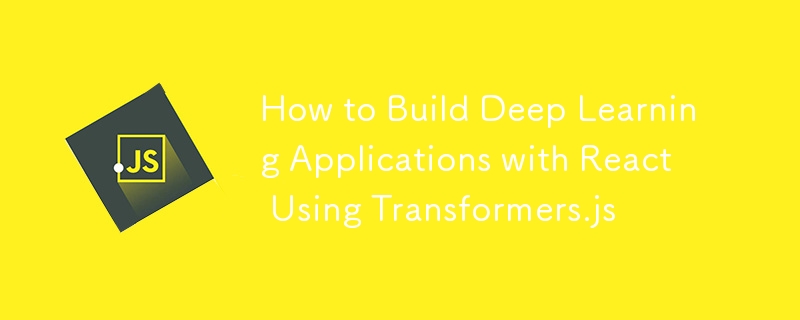

With the rise of machine learning (ML) in web development, integrating deep learning models into front-end applications is more accessible than ever. One of the most exciting advancements in this space is the use of Transformers.js from Hugging Face, a JavaScript library that allows developers to run state-of-the-art deep learning models directly in the browser without the need for server-side computation.
In this post, we will explore how to build deep learning applications using React and Transformers.js to leverage models for tasks such as natural language processing (NLP) and computer vision. The library supports several tasks, including text generation, sentiment analysis, image classification, and more, directly in the browser.
Transformers.js is ideal for developers who want to bring the power of machine learning to the client side, ensuring:
npx create-react-app my-ml-app cd my-ml-app
npm install @xenova/transformers
import React, { useState, useEffect } from 'react';
import { pipeline } from '@xenova/transformers';
function SentimentAnalysis() {
const [model, setModel] = useState(null);
const [text, setText] = useState("");
const [result, setResult] = useState(null);
useEffect(() => {
// Load the sentiment analysis model
pipeline('sentiment-analysis').then((pipe) => setModel(pipe));
}, []);
const analyzeSentiment = async () => {
const analysis = await model(text);
setResult(analysis);
};
return (
<div>
<h1>Sentiment Analysis</h1>
<input type="text" value={text} onChange={(e) => setText(e.target.value)} />
<button onClick={analyzeSentiment}>Analyze</button>
{result && <p>Sentiment: {result[0].label}, Confidence: {result[0].score}</p>}
</div>
);
}
export default SentimentAnalysis;
In this code snippet, we use the pipeline function from Transformers.js to load the sentiment analysis model. The user can input text, and the application will analyze the sentiment and display the result.
Transformers.js supports a variety of tasks across NLP, vision, and audio processing. Some of the most popular tasks include:
Running machine learning models on the client-side can be resource-intensive. However, Transformers.js uses WebAssembly (WASM) to optimize performance. Additionally, developers can convert and quantize models to ONNX format to make them lighter for browser inference【6†source】【7†source】.
Building deep learning applications with React and Transformers.js opens up numerous possibilities for creating intelligent, interactive, and privacy-preserving web apps. With the flexibility of Hugging Face's model hub, you can implement cutting-edge models in minutes, all while staying serverless. Whether you're working on text-based apps or visual ML projects, Transformers.js offers the tools to make your app smarter and faster.
Want to dive deeper? Explore more at the official Transformers.js documentation.
The above is the detailed content of How to Build Deep Learning Applications with React Using Transformers.js. For more information, please follow other related articles on the PHP Chinese website!
 What are the design patterns used by laravel?
What are the design patterns used by laravel?
 Official download and installation of Euro-Italian Exchange app
Official download and installation of Euro-Italian Exchange app
 How to register a Bitcoin wallet
How to register a Bitcoin wallet
 What to do if you can't delete files on your computer
What to do if you can't delete files on your computer
 Drawing software
Drawing software
 A complete list of alter commands in Mysql
A complete list of alter commands in Mysql
 How to solve internalerror0x06
How to solve internalerror0x06
 Window function usage
Window function usage




